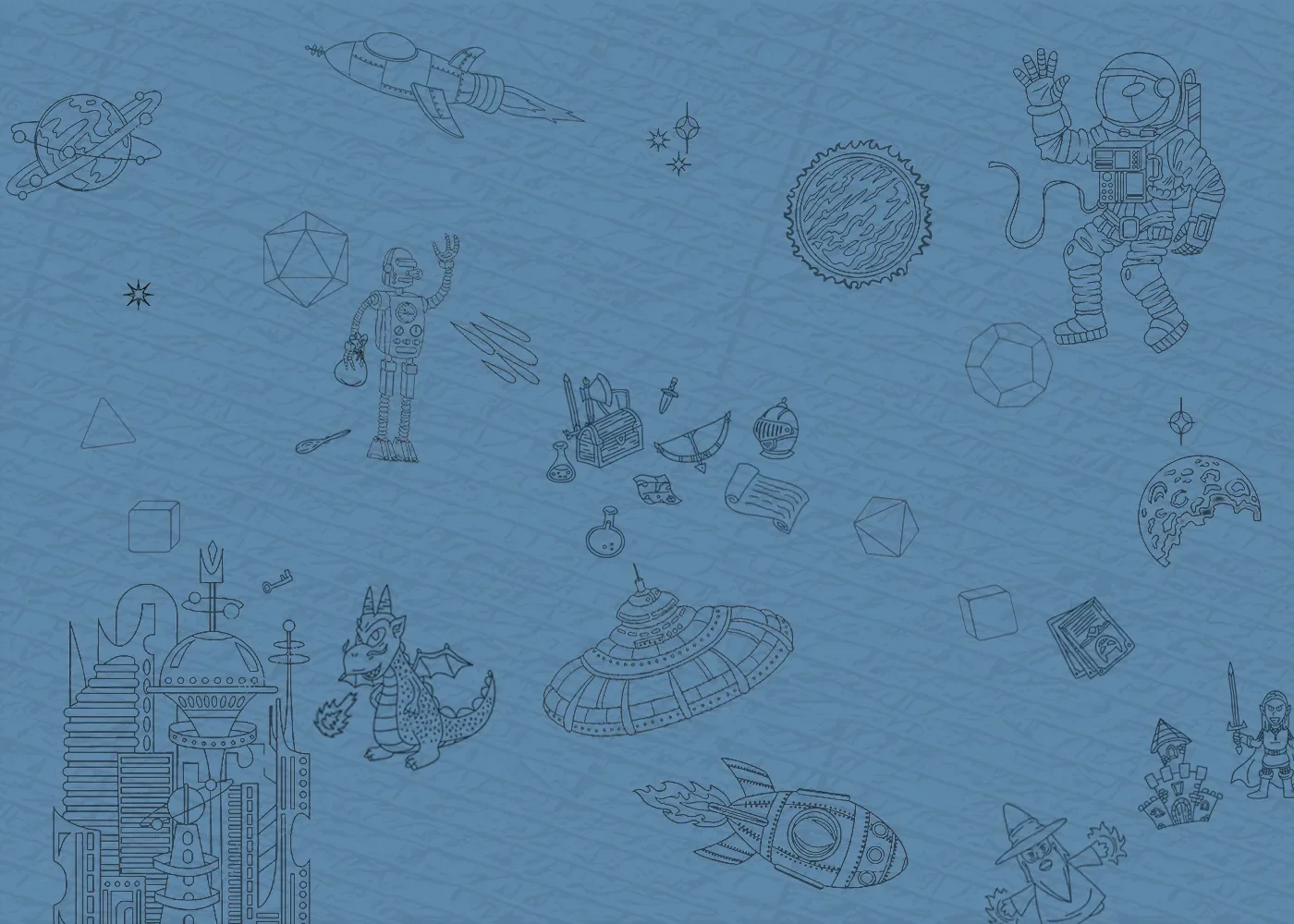
What is a Roleplaying Game, exactly?
Dungeons & Dragons, Pathfinder, and many others - these are Tabletop Roleplaying Games (TTRPGs, TRPGs, or RPGs)
At its core, a roleplaying game is about making decisions from the perspective of another person. In most cases, an imaginary character that you get to create.
It is pretending and playing make believe - not so dissimilarly to the way children do. It differs in that we use a set of rules and traditions to make the stories we come up with seem more - well, true. The rules mostly revolve around the use of dice; several different kinds of dice, in fact: 4-sided (d4) all the way up through 20-sided (d20).
You will use dice to determine whether or not your character is successful at something they're trying to accomplish. As the game's facilitator - or Dungeon Master (DM)/Game Master (GM)- I decide how difficult a task is. A whole host of factors - most of them chosen by you as you 'build' your character - determines how likely your character is to succeed or fail. That likelihood is expressed as 'modifiers' - how big of a number you get to add to the relevant die roll.
The game feels - basically - like a group conversation, lead partly by the GM.
The GM describes what the characters are experiencing, and asks "What do you do?". Each player declares what action(s) they want to take *as* their character. The player's choice of action is entirely theirs, limited only by the player's imagination, and by what is reasonably 'possible' within the logic of the game-world. If there's any doubt that a character is able to succeed at a given task, dice are rolled to determine the outcome. In either case, the GM describes how the character's action affects the world. Rinse and repeat.
Example of play
GM: "It's so early, it's dark outside as your group quietly departs the Inn you spent the night in. In this sleepy little village, folk still haven't risen to begin their day. You see the town square is empty and mostly dark - a single hanging lantern casts a dim glow over the area, now aided by a deep blue light growing behind the mountains in the distance. You then quickly notice an overturned carriage near the village well. From this angle, you can mostly just see the underside of the carriage, big and dark - but you hear what sounds like an aggravated thrashing noise coming from inside, like a trapped and panicked animal might sound. What do you do?"
<a moment passes>
Angie: "Fidja approaches the carriage."
GM: "As you get closer, you begin to make out a symbol painted - or burned? - onto the lighter wood of the carriage's underside. Six intersecting circles arranged as a triangle, cut into the wood as if branded."
Angie: "Do I recognize this symbol?"
GM: "Make a History check."
Angie grabs a d20 and rolls it. The die comes up on 11. Luckily for Angie, she built her character to be more likely to succeed at this type of thing; Fidja's life was spent in scholarly pursuits! Her high Intelligence score means Angie gets to add 3 to the roll, and the fact that Fidja was built to be proficient in knowledge rolls that relate to History specifically means Angie gets to add 2 more on top of that! The 11 becomes a 16.
Before Angie rolled, the GM silently decided that the difficulty in this History check warranted a fairly high 'difficulty class' (DC), and so mentally set the DC at 15. Sometimes players will know the DC before they roll, sometimes they won't. Angie rolled a 16, and that beats the DC of 15. Angie's character succeeded at recalling the relevant information.
GM: "You recall reading about this symbol in one of the library's ancient tomes about the Old Gods. Scarcely seen for hundreds of years, it's the mark of the cult of Galbbroxzt. A long time ago they tried to summon their alien master into the world, ushering in an age of darkness, but they were destroyed."
Angie: (As Fidja) "I don't know what's in that carriage, but we need to be careful here."
Jason is another player at the table, and he created his PC to have a brash personality. His character, Theo is a young but highly capable swordsman. When Jason created Theo, he decided that one of Theo's personality flaws would be that he tends to disregard words of caution - he's arrogant and he's highly motivated to help someone in need. Jason has so far enjoyed Roleplaying the part of the idealistic hero.
Jason: "Sorry everyone; this might be dangerous, but Theo would rush in. (As Theo) I rush in to open the carriage door, yelling, 'Are you alright in there?”
And so the game goes. The above example is showing the particular rules and themes of fantasy RPGs like Pathfinder and Dungeons & Dragons. Other RPGs may play a little differently or explore different genres of fiction; but most share the same objective: not to 'beat' your fellow players, or to achieve a 'high score', but to create memorable and exciting stories with your friends.
Fantasy RPGs are usually fairly action-oriented, and so players will typically be 'building' their characters with heroism and monster-fighting in mind. At the table we 'discover' how our characters affect and react to our shared imaginary game-world, and to one another. Sometimes the question at-hand is, "will my character survive the fight against this villain?" - other times, the question is, "will my rough-and-tumble character embarrass themself at the opulent high-society gala?". Like a long-form television series, we return week after week just to see what comes next.